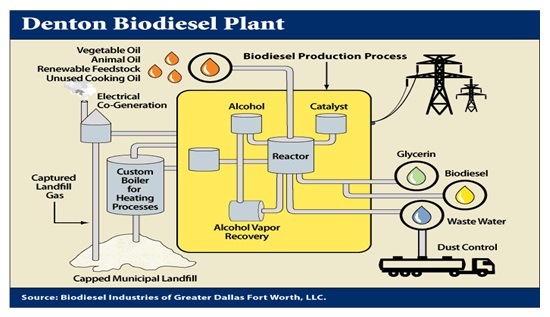School Buses to Try a Soybean Fuel
School Buses to Try a Soybean Fuel
At the Haines School in Medford, N.J., students can glance out the window at several hundred acres of soybeans across the street. Soybeans are the leading field crop in New Jersey, surpassing corn, wheat, hay and potatoes.
Now these youngsters will have a chance to learn firsthand whether soybeans can help New Jersey comply with the Federal Clean Air Act. On Wednesday, their rural district said it would try out a mixture of soybean oil and diesel fuel in 20 of its school buses. Over the next five years, engineers will compare the performance and emissions of these buses with a control group of the other 20 buses that belong to the district.

A modest trial was conducted at a school district in Texas several years ago, but school officials in Medford said that theirs is the first district in the country to try the blend for an extended period.
At a ceremony to mark the beginning of the experiment, which is being financed with an $110,000 grant from the Federal Department of Energy, students said that the so-called biodiesel mixture of one part soybean oil to four parts diesel fuel had a distinctive odor.
''It smelled like McDonald's French fries or popcorn, something with oil or butter in it,'' said Mary Altum, 10, a fifth grader at the Haines School.

Proponents of the fuel say that it is burns cleaner than ordinary diesel fuel, mainly because of the high oxygen content, and can be expected to cut down on vehicle maintenance. Diesel engines do not have to be modified to use it, although some of the buses will be equipped with special catalytic converters to test whether emissions can be further reduced. The catch is that the fuel costs 60 cents a gallon more than ordinary diesel fuel, said Gene Gebolys, a vice president at Twin Rivers Technologies, of Quincy, Mass., the firm that will supply the fuel. A portion of the Federal grant will be used to defray the added cost. The rest of the money will go toward a new storage tank and fuel pump.
With New Jersey behind in its effort to reduce vehicle emissions, state officials said they would watch the Medford experiment closely to determine whether alternative fuels like biodiesel can help the state meet Federal standards.

The soybean mixture has been around since 1992 and has been used in about 175 trials, mostly in the Middle West, where most soybeans are grown, said Deborah Zabel, director of the New Jersey Soybean Board, a trade group. There have been agencies, like a bus operator in St. Louis, that continued using the fuel after the trial period, she said. At the Haines School, Gail Pratt, the principal, said the bus experiment would add a practical note to classroom instruction on the environment. For the bus drivers, the consequences are more immediate. ''Many of the operators complain that it makes them hungry,'' Ms. Zabel said.
source: http://www.nytimes.com/1997/12/06/nyregn/school-buses-to-try-a-soybean-fuel.html
- Log in to post comments
